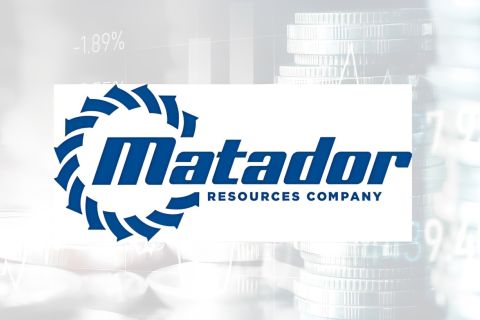Recently, a group of energy companies announced plans to break up their companies with the intention of separating exploration and production (E&P) businesses from pipeline or refining operations. The new trend of companies such as El Paso Corp., Williams Co. Inc. and ConocoPhillips separating their businesses is being driven by investors who believe there is more value in separate companies, according to industry insiders.
"You have an issue where competitors were acquiring leases and drilling prospects while El Paso was spending billions on pipeline projects," says Bradley Olsen, an analyst for Tudor, Pickering, Holt & Co. in Houston.
"Investors want an E&P company to be able to raise capital for E&P activities without having to worry about that capital being diverted to pipeline spending. Similarly, investors give more value to a midstream business when it is outside of an integrated energy company."
Separating El Paso's pipeline business from its exploration and production operations will allow each company to focus on strategies and pursue growth opportunities, including acquisitions, explains executive vice president and chief financial officer, John R. Sult.
"We have been looking at the issue of whether we should remain an integrated company for many years," he says. "While we have been big believers in the integrated model, we have also said if our stock did not achieve what we believed was an appropriate valuation, we would do whatever we needed to do to unlock that value for our shareholders."
El Paso Corp. plans to separate into two publicly traded companies. El Paso Corp. will consist of its pipeline segment, its midstream group and its general and limited partner interests in El Paso Pipeline Partners LP, its publicly traded master limited partnership (MLP). The E&P unit, named EP Energy Corp., will focus on its properties in the Wolfcamp, Haynesville and Eagle Ford shales and the Altamont field.
Since 2007, the company has concentrated on oilier assets with low-cost inventory. El Paso says it plans to complete the tax-free spinoff of its E&P company before the end of 2011.
"Many market participants expected El Paso to break up," Olsen says. "Since the announced breakup, El Paso has performed in line with peers due to the fact that the market had been anticipating this for months. It's definitely something the market was seeking. Generally speaking, in a time of high growth in a given industry, investors tend to prefer a very simplified business structure."
El Paso was unable to seek a spin-off previously because it was overleveraged and had a large pipeline backlog, explains Sult, who is also chief financial officer for El Paso Pipeline Partners.
"Until very recently, there have been barriers to a separation," he says. "First, we had too much debt. The pipeline business needs to remain investment grade and we could not spin off an over-levered E&P company."
Now, however, the company has been able to boost its bottom line from its drop-down strategy with its MLP, El Paso Pipeline Partners, according to Sult. "We have improved our financial position faster than either investors or, frankly, we thought possible," he says.
El Paso previously had an $8 billion pipeline backlog, but soon its 19 projects will be completed. Those projects were finished within 7% to 8% of its budgeted costs, Sult says. During the past couple of years, El Paso has also developed and improved its drilling inventory.
"We now have a 10-year plus drilling inventory that is oilier, more repeatable and profitable," he says.
Overcoming challenges
After overcoming its challenges, the company prepared to separate its businesses. "Early in the year, we took another hard look at separation, and we concluded that a tax-free spinoff of the E&P company was in the best interest of our businesses and our shareholders," Sult says.
Since the E&P business requires more capital, it can pursue additional growth and reinvest its free cash flow. Conversely, the pipelines operations can generate more dividend growth for investors.
Both companies will benefit from the separation in the form of an increase to its credit ratings, Sult says. "The separation is credit enhancing for El Paso Corp. We think that it will have investment grade metrics as soon as the spinoff of the E&P company is complete."
Also, with additional equity, each company will be poised for faster growth, including potential acquisitions, Sult says. "Both companies will have their own equity currencies that they can use for future growth. As an integrated company, we found it difficult to pursue acquisitions that required equity financing."
Obtaining capital for projects and acquisitions will also be a simpler task. Both companies should have a lower cost of capital and improved access to the capital markets, and the capital allocation process will be more straightforward.
Shareholders are expected to gain a "significant" increase in their holdings, says Sult. "Overall, investors will be able to choose their investment and own each company separately. In addition, the management teams for each company will be solely focused on their respective businesses. The sell-side analysts' valuations for El Paso range from $24 to $32 per share, so there is significant upside."
Yet, the strategies for each company will not be altered, at least in the near term. The pipelines business will generate significant free cash flow after the completion of the $8 billion backlog of organic growth projects.
Electric power generation
Meanwhile, the pipeline group will have the opportunity to seek business in the electric power generation market because few new coal-fired plants are being constructed and a large number are being retired and shut down.
"While renewable energy will grow, gas-fired power plants will be the cornerstone for new electric power generation needs," he says. "We also see growth in serving the Mexican market and additional opportunities for expansions in the Marcellus shale, where we already have $1 billion in committed projects."
El Paso Pipeline Partners recently acquired additional working interest in two pipelines: Southern Natural Gas (SNG) and Colorado Interstate Gas Company (CIG), marking its second dropdown deal in 2011. The partnership paid $745 million to El Paso Corp. for an additional 15% interest in SNG (it now owns100% of the pipeline) and an additional 28% interest in CIG (it now owns 86% of the pipeline).
The additional combined working interest in the pipelines will add $125 million in annual EBITDA, writes Raymond James analysts Darren Horowitz and Kevin Smith in a recent report.
"With an unparalleled amount of pipeline assets at the parent level ready to be dropped down into the MLP and a significant cost of capital advantage at the partnership level, we expect that El Paso Pipeline Partners will continue to deliver strong distribution growth," the analysts report.
The pipeline partnership's "highly visible portfolio of drop-down assets, stable cash flow profile and above average distribution growth," are positive attributes, they assert.
"As this transaction demonstrates, the valuation arbitrage between the pipeline asset's valuation in a C-corp versus MLP continues to allow for highly accretive transactions at the MLP level," Horowitz and Smith report.
Nationally, El Paso's pipeline assets represent about one-fourth of the country's interstate natural gas pipelines, and the company will be bringing online about $600 million worth of projects, primarily in 2012 and 2013. These include an additional build-out of the Marcellus and the Southeast. Once these projects are completed, El Paso Corp. should generate significant cash flow.
El Paso's midstream business will also be active as it competes for other work on several new projects. "We expect midstream will be a significant contributor to El Paso in a few years," Sult says.
Since the company's E&P business has successfully produced more than 10 years of drilling inventory, it will continue pursuing its strategy of establishing "large positions in a core area, because it provides the opportunity to develop repeatability and maximize cost efficiency in order to deliver superior returns," he says.
The E&P operations will continue to focus its efforts in four core areas, he says. "First is the Haynesville shale, which is the only natural gas program in our inventory being drilled right now," he says. "And three oil programs, the Eagle Ford shale in south Texas, the Wolfcamp shale in the Permian Basin and the Altamont Field in the Uinta Basin of Utah are the others."
El Paso has a great line of sight on its growth for the foreseeable future, Sult says. Barclays Capital analysts Richard Gross and Christine Cho agree, stating that the company consists of a "high class portfolio of assets with a plethora of growth opportunities and a low cost structure," in their recent report.
Next steps
Before the spin-off of the E&P company, El Paso will issue $2 billion to $2.25 billion of debt and will also have a $1-billion credit facility that will mostly be undrawn. The proceeds will be used by El Paso to pay down its debt.
Sult says, "We expect to start with a dividend of $0.60 per share per year and grow it at a double-digit annual rate. What will make El Paso unique is that our pipelines provide extremely predictable cash flows with roughly 90% of our revenues coming from fixed demand charges that our customers pay to reserve capacity on our pipelines."
The E&P company will continue focus on its current oil assets until natural gas prices rebound. While exploration in the Eagle Ford and the Wolfcamp shales occur, both areas are projected to produce significant growth in oil volumes, he says.
It is not unlikely more energy companies will split up their operations and assets, Olsen says. "E&P companies are going to be more focused on their operations. Management teams have often spent too much time defending structure to investors. This will optimize their business and deploy capital into their business. It is back to basics."
Recommended Reading
Matador Stock Offering to Pay for New Permian A&D—Analyst
2024-03-26 - Matador Resources is offering more than 5 million shares of stock for proceeds of $347 million to pay for newly disclosed transactions in Texas and New Mexico.
CEO: Coterra ‘Deeply Curious’ on M&A Amid E&P Consolidation Wave
2024-02-26 - Coterra Energy has yet to get in on the large-scale M&A wave sweeping across the Lower 48—but CEO Tom Jorden said Coterra is keeping an eye on acquisition opportunities.
The One Where EOG’s Stock Tanked
2024-02-23 - A rare earnings miss pushed the wildcatter’s stock down as much as 6%, while larger and smaller peers’ share prices were mostly unchanged. One analyst asked if EOG is like Narcissus.
Texas Pacific Land Approves Three-for-one Stock Split
2024-03-10 - Each stockholder of record as of March 18 will be distributed two shares for each share owned.
PrairieSky Adds $6.4MM in Mannville Royalty Interests, Reduces Debt
2024-04-23 - PrairieSky Royalty said the acquisition was funded with excess earnings from the CA$83 million (US$60.75 million) generated from operations.





